Like many readers, I have been eagerly awaiting the arrival of the Samsung Galaxy Ring since its earliest rumors. In the meantime, I’ve kept my finger warm with an Oura Ring 3, a device I’ve grown to love. This week, I finally had the chance to wear both smart rings simultaneously, and while I hoped to crown a top pick, I’m actually left wishing for a mashup.
An established brand with its third generation, Oura offers a robust app and has truly perfected much of the user experience. On the other hand, Samsung introduces innovative ring features and a more convenient charging apparatus. Who’s better? Well, both of them excel at different things.
Would you buy an Oura Ring with a subscription or a Galaxy Ring without?
175 votes
Design and comfort: Samsung slips ahead
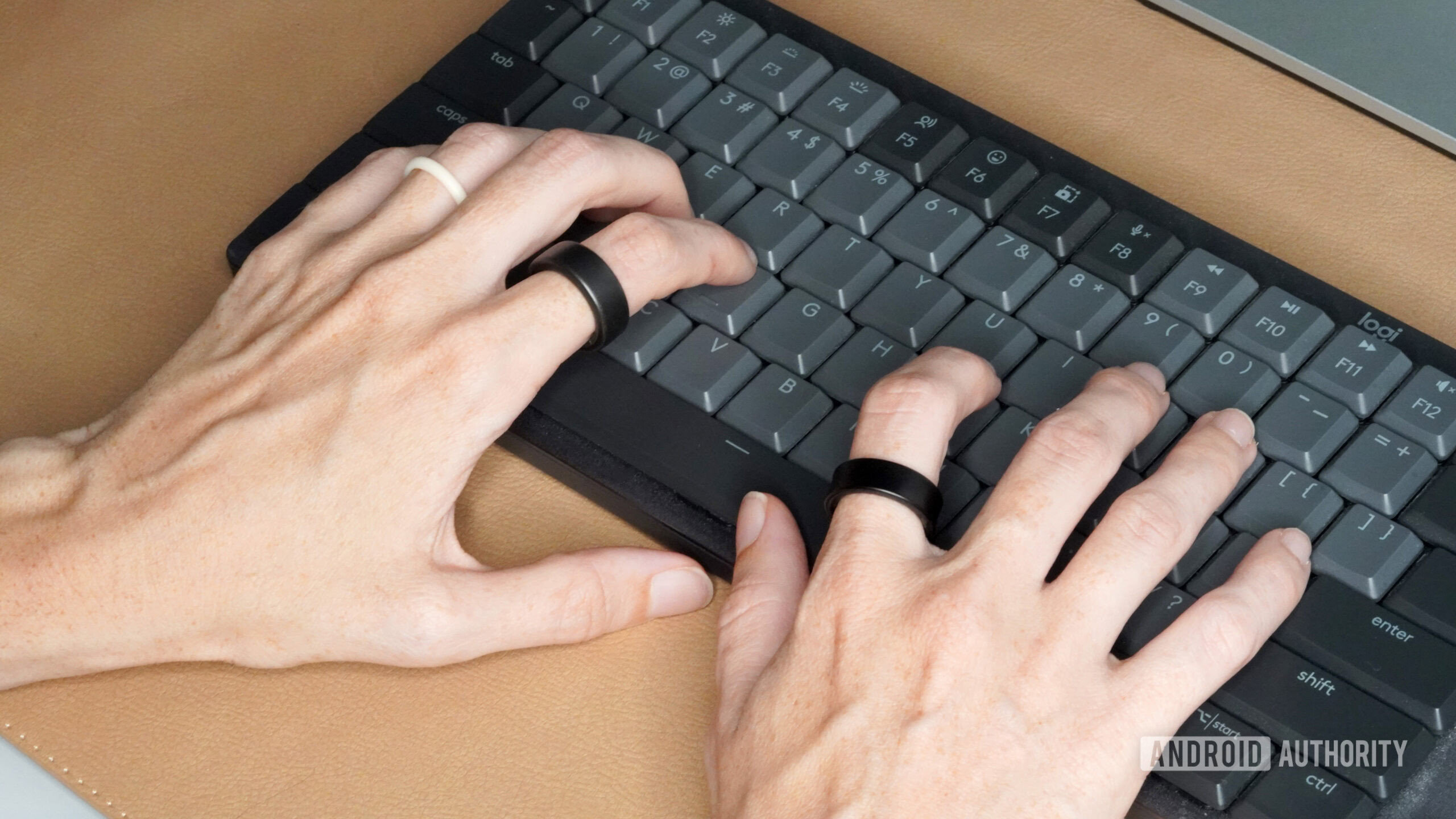
Kaitlyn Cimino / Android Authority
At first glance, most smart rings look pretty much the same. There just isn’t much you can do with such little real estate and strict ergonomic needs. The same can be said for both Samsung and Oura’s rings, each of which offers a jewelry-inspired design that lands somewhere between a men’s wedding band and a bulky finger bangle. The Oura Ring 3 sports a convex design that’s hefty yet comfortable and available in a variety of neutral colorways. The company offers a perfectly round model as well as one with a plateau edge for a more modern look. The Galaxy Ring features a contrasting concave design, with edges that dip back toward your finger for a slimmer impression. It, too, comes in neutral finishes, including black, silver, and gold.
However, Samsung’s ring is slightly narrower and lighter than Oura’s offerings, and on my petite fingers, the difference is significant both aesthetically and comfort-wise. The matte black finish of the Galaxy Ring is sophisticated and seems more durable, showing no blemishes or scratches even after a week of wear. My Oura Ring, on the other hand, is quite beat-up looking and, though much older, scratched easily from the start. On the palm side of each ring, both have indicators to help users keep the sensors in the correct position. While perfectly effective, Samsung’s is more subtle, a design choice I appreciate.
Both companies also offer sizing kits to help users find the right fit before investing. Each of the kits was effective in helping me determine my size. The bulbous sensors on the inside of both rings can be particularly challenging to slip over knuckles (and don’t feel especially pleasant grinding over bone on the way). Samsung’s are slightly flatter, which means I typically dread taking that ring off less than the Oura.
The Galaxy Ring is thinner and lighter, with a concave design that's more comfortable.
With all of that said, both rings are adequately comfortable for all-day wear and great for sleep tracking. To the chagrin of my partner, I wear a $5 silicone ring instead of my wedding band, which says a lot about how much I value my comfort. Unlike my cheap symbol of matrimony, both smart rings are too painful to wear during a handful of my go-to activities, including weight lifting, tennis, and rowing. I also prefer not to wear the rigid rings during showers (though their water resistance would allow it) because they catch my cheekbones and brow bones when I wash my face. Finally, I spend a lot of time in the ocean and wouldn’t confidently dip in with either of these rings on my finger. Frankly, they’re just too expensive to risk slipping off into the deep blue.
However, these limitations are a shortcoming of all smart rings. After five days with a ring on each index finger, I didn’t experience any notable red flags. Regarding design the two rings are close, but in my opinion, Samsung leaned into the successful aspects of Oura’s builds and added in some key refinements.
Features and companion apps: Oura has the edge
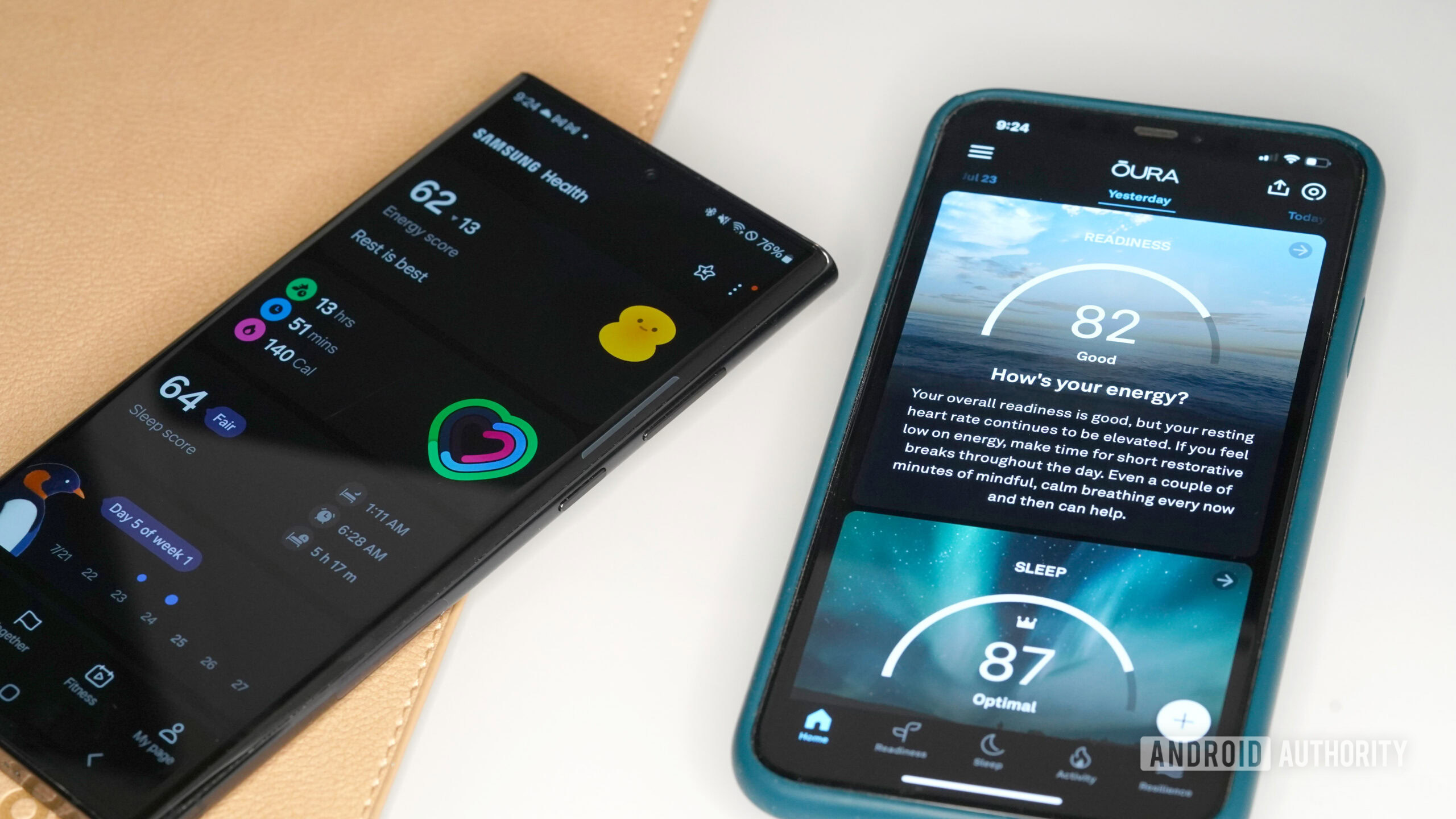
Kaitlyn Cimino / Android Authority
Of course, no one buys a smart ring strictly for its looks. Both the Galaxy Ring and Oura Ring track a considerable amount of useful health and fitness tracking data, including heart rate, stress, sleep, temperature, and SpO2. Each also offers detailed cycle tracking, though only the Oura Ring offers pregnancy guidance. Both devices automatically track a limited number of workouts and allow you to start additional workouts manually from their companion apps.
Oura breaks users’ data down into three main scores: Readiness, Sleep, and Activity, for a holistic view of wellness tracking that is digestible and actionable. Similarly, Samsung provides a Sleep score as well as an Energy score, which is based on your sleep, activity, and heart rate. Data collected by the Galaxy Ring feeds into Samsung Health, the companion app used by the Galaxy Watch lineup, which means users can also peep their activity data in the form of Samsung’s Apple-like heart rings.
For me, this is where things tip in Oura’s favor. The Oura companion app presents focused data tailored to personalized goals and behaviors. The landing page consists of synthesized details with insights meant to facilitate improved general health as well as reduced stress, improved productivity, and a well-rounded approach to activity versus rest. For users who want more details, graphs, trends, and long-term data are just a few taps away. Oura is particularly successful at sleep tracking (including naps), which isn’t a surprise considering that is the realm in which the company started. As far as accuracy goes, Oura consistently recorded values closer to my Withings Sleep mat (a notably accurate device) than the Galaxy Ring. Samsung’s sleep platform is also still quite simplistic despite the adorable sleep animal concept.
Oura's companion app provides holistic analysis and better, personalized insights.
In general, the Samsung Health app is not as detailed or robust as I would like it to be. For the basics, Samsung does a good job of presenting clean data sets, but the analysis is not quite to the level of competitors. That said, the app does show signs of growth, including the newly added Energy score and the consistent push to improve the platform’s sleep-tracking offerings. Over the past five days, my Energy score was comparable to my Oura Readiness score, which bodes well for the feature’s accuracy. Samsung’s AI-generated Wellness Tips are also a promising concept, though they require a Samsung Galaxy phone, but I didn’t find them as useful as the analysis provided by Oura.
All in all, I prefer the Oura app to Samsung Health. I would also venture to say Oura may have the edge in terms of accuracy, though I would like to give the Samsung Ring a longer period of heavy use before saying for sure. My sleep and step counts this week have both been slightly off on the Galaxy Ring, and my average heart rate hasn’t consistently aligned with other wearables during workouts.
Compatibility and integration: Each has its benefits for specific users
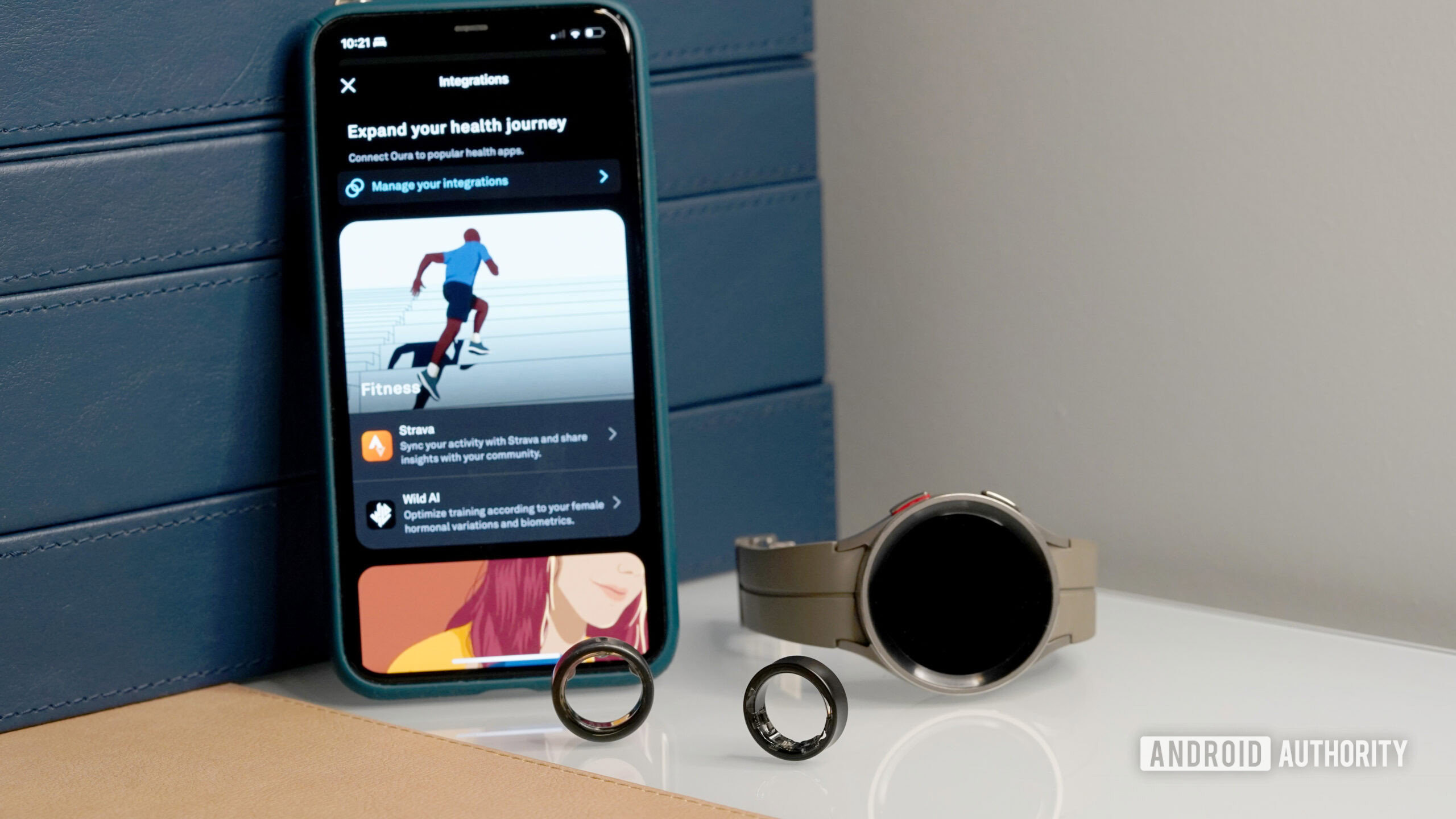
Kaitlyn Cimino / Android Authority
If you are reading this as an iOS user, the choice is easy. Only the Oura Ring offers compatibility with iPhones. I’ve actually tested the device on both an Android phone and an iPhone, and the experience is flawless. Historically, some beta features will hit iPhone users first, but I haven’t felt limited as an Android user or had any complaints. Oura is also deeply integrated with a wide range of third-party apps thanks to its extensive partner ecosystem. Users can seamlessly sync data with everything from Strava to Peloton to Headspace and tons more.
The Galaxy Ring, on the other hand, is a strictly Android device, and the best experience is had by Galaxy phone and Galaxy Watch owners. In fact, the device’s truly unique features can only be used within the Samsung Galaxy ecosystem. With a double pinch gesture, you can control the camera on certain Samsung phones or dismiss an alarm. You can use Samsung Find My to locate the ring and to flash its LED lights while you search. You can also wear your ring and Galaxy Watch simultaneously, and the Samsung Health app will prioritize which sensors to record data from in order to stretch your battery life up to 30%. Of course, the app will also automatically combine all data that was separately recorded by the devices to present all your metrics in one place.
Battery life and charging practices: I’m partial to Samsung’s innovation
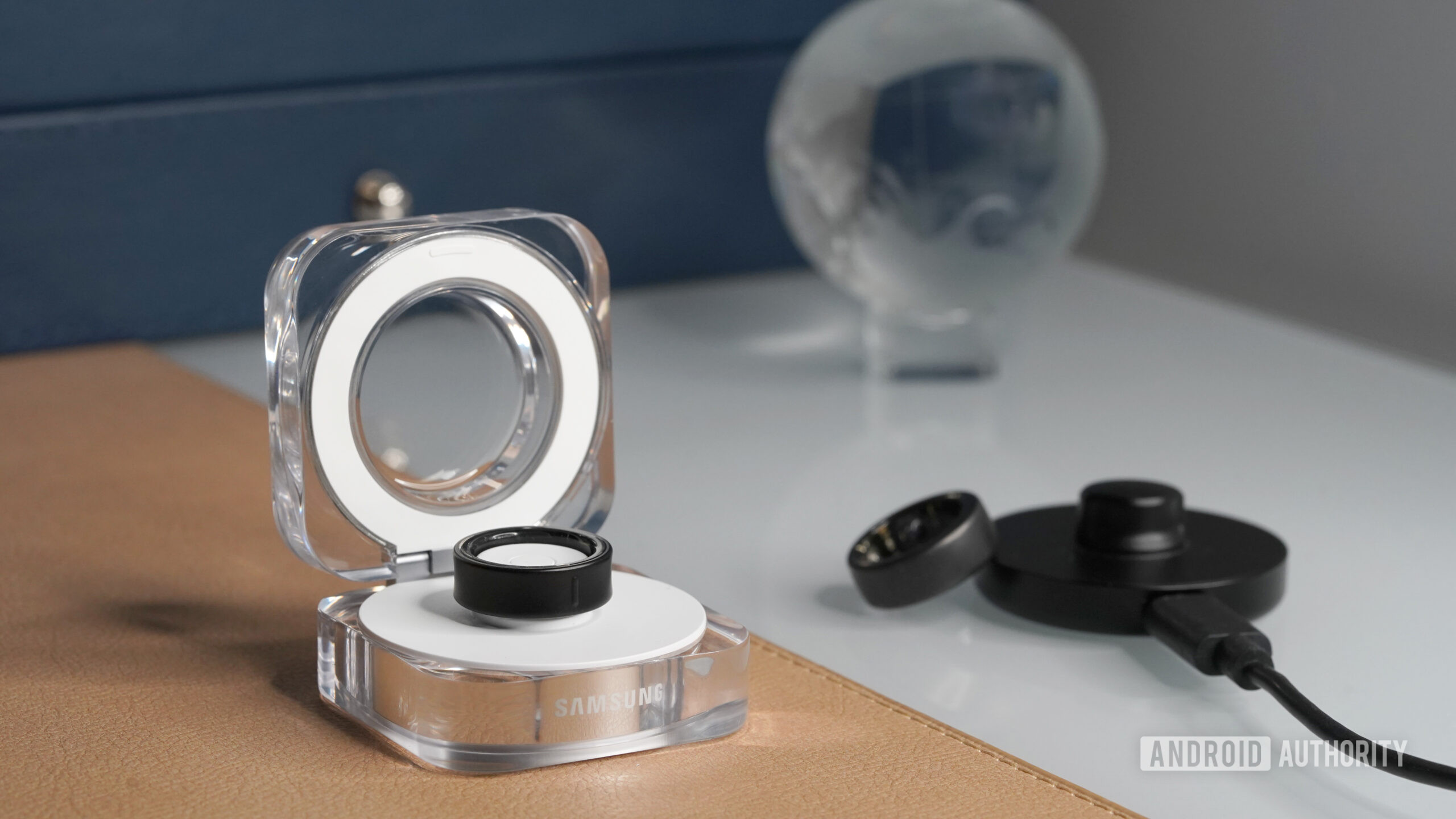
Kaitlyn Cimino / Android Authority
Battery life is a huge component of smart rings, as a major benefit of the small form factor is the lack of power-draining displays. Both Oura and Samsung claim roughly week-long battery life on their respective devices. I’ve found these estimates optimistic compared to my real-world experience, with each ring landing closer to 4 or 5 days of heavy use between charges. These stats largely depend on what features are enabled and used during a review period, so it’s fair to say others might find the battery life on their own devices stretches further. Personally, I am comfortable with both rings’ battery performance and find them exceedingly convenient compared to smartwatches.
The Galaxy Ring's clamshell charging case packs a built-in battery for charging on the go.
Where Samsung pulls ahead is its transparent, clamshell charging case which features a built-in battery of its own. Using this case, Galaxy Ring owners can charge their devices 1.5 times before needing to track down an outlet. This means packing my ring and case for a trip sans cable or leaving the case neatly on my desk without introducing a snaking cable to your workspace. To say I love this style of charger is not an exaggeration. Samsung isn’t the only company to employ such an approach, but it’s definitely the prettiest one I’ve seen. Plus, as mentioned, Samsung Galaxy Watch users can eke out extra battery life when using their smart ring and watch at the same time. This is another way Samsung outshines Oura in terms of power.
Cost and pricing structure: Pick your poison
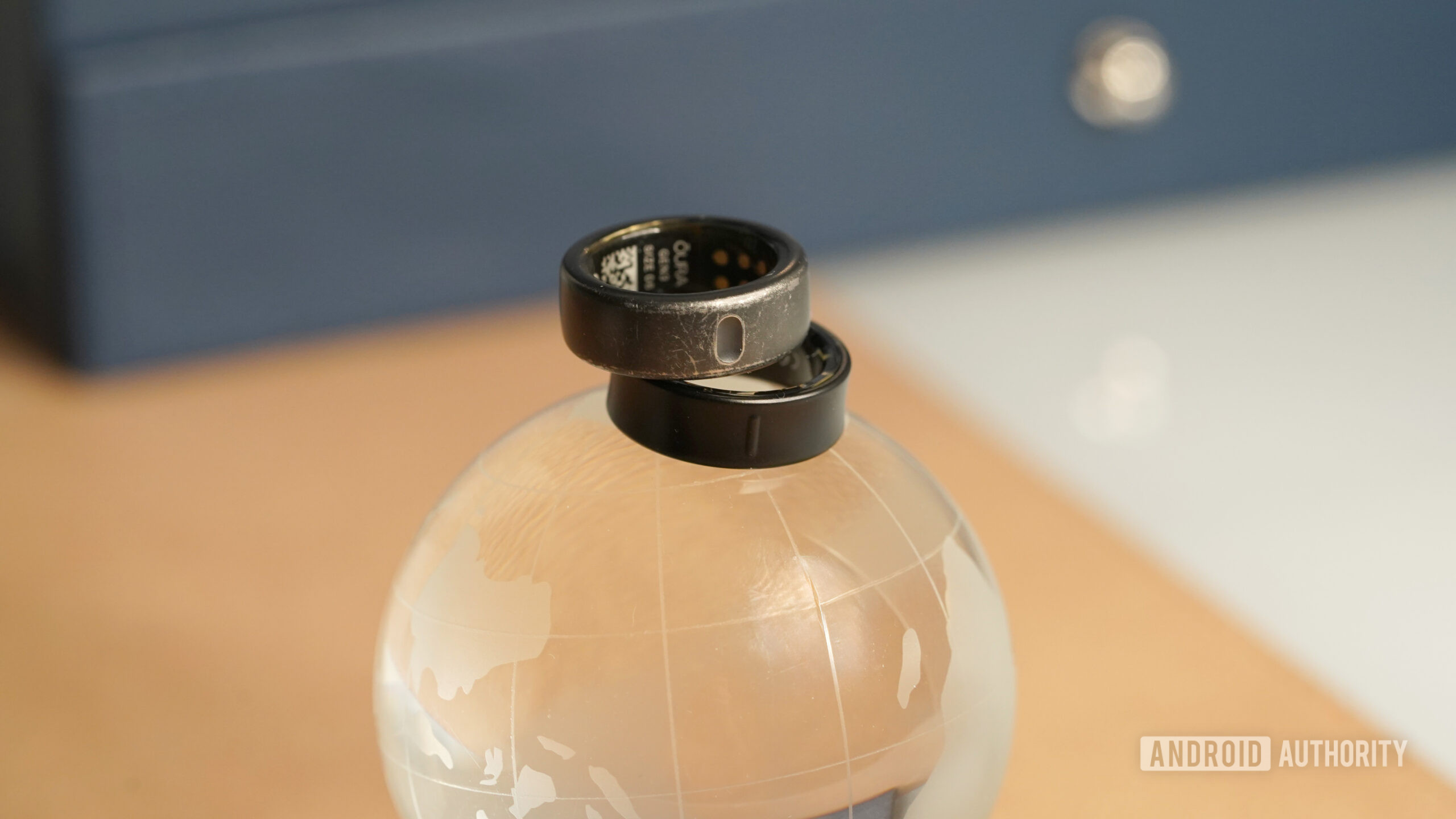
Kaitlyn Cimino / Android Authority
Samsung and Oura take two different approaches to pricing their devices. The Galaxy Ring is available for a one-time fee at a whopping $399. This is exorbitant, to say the least, and perhaps hard to swallow when you consider that spending the same amount could get you a full-featured smartwatch. However, the company chose not to introduce a subscription plan and that is commendable. For now, what you see is what you get, and what you get is what you buy upfront. Rumors suggest this may not always be the case, but for now, it’s an advantage over Oura’s alternative route.
The Oura Ring 3 starts at $299, with upcharges for the company’s more expensive ring style. After checkout, users are also required to pay $5.99/month for access to the ring’s most important features. It’s a long-term commitment in a world flooded by subscription fees. There is an argument to be made that Oura does offer a truly powerful feature set and continues to add new tools regularly (and it does need the constant cash influx as a smaller company), but whether that justifies pulling your wallet out monthly is up to you.
Samsung Galaxy Ring vs Oura Ring 3 verdict: I want the best of both rings
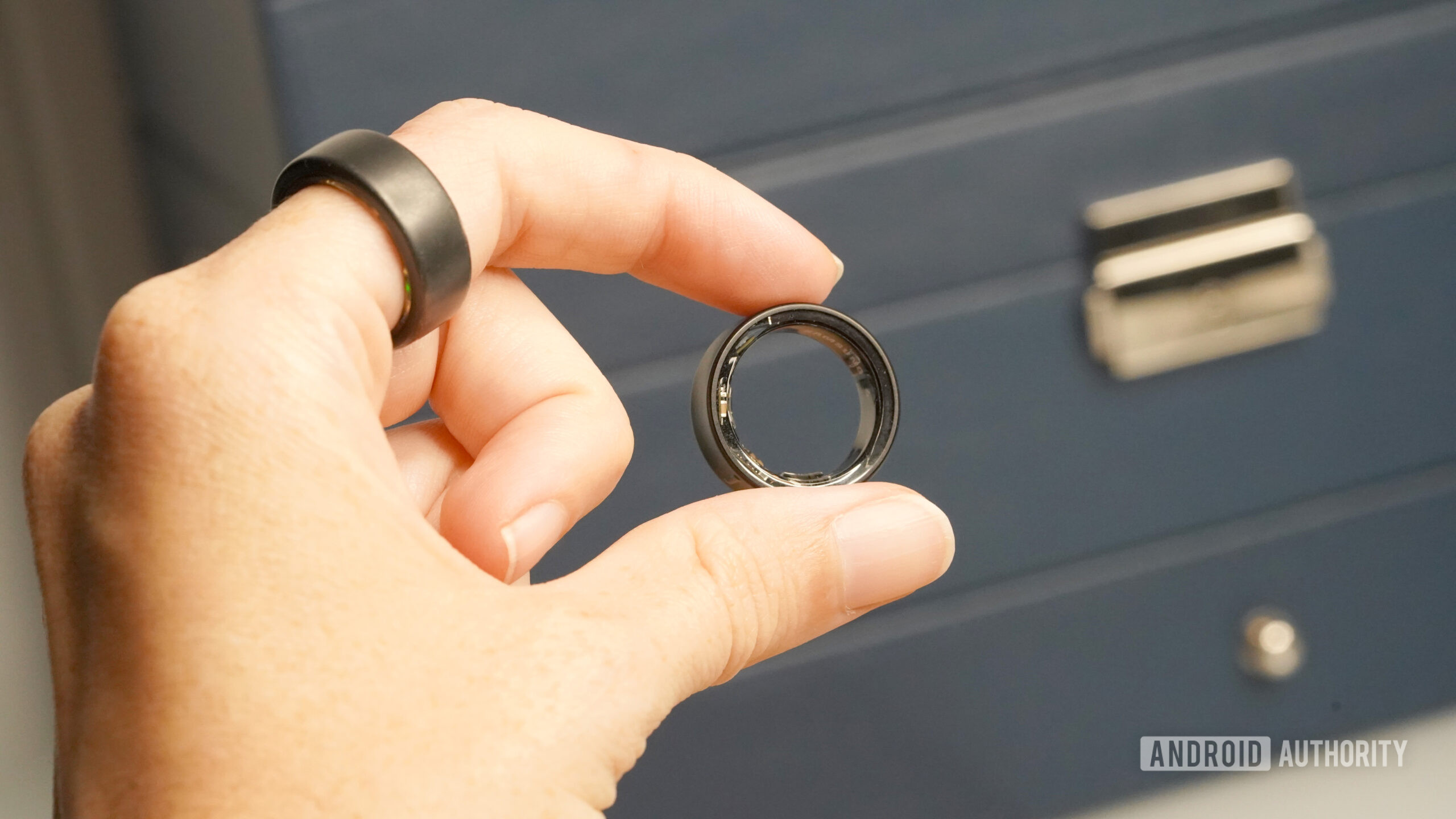
Kaitlyn Cimino / Android Authority
Before the Galaxy Ring arrived on the scene, I was pretty content with the Oura Ring 3 (and excited about the prospect of an Oura Ring 4). Having worn both devices, I now yearn for a ring that strikes the perfect combination of each one’s strengths. I’d happily purchase a ring with the comfortable design of the Galaxy Ring and Oura’s accuracy, analysis, and companion app. I could do without a subscription fee, but I wouldn’t mind retaining a low MSRP, either. Innovative features plus a consistently expanding platform exploding with partnerships? Great. Throw in a portable charging case, and I’d be sold.
Neither ring is perfect, but each is best suited to specific shoppers.
The truth is neither ring is perfect, but each one is better for specific shoppers. I often find myself qualifying the power of Samsung’s smartwatches based on the company’s walled-garden approach to certain health features. Unfortunately, we also see a bit of that on the Samsung Galaxy Ring. Where the Oura Ring feels like a device for the masses, the Galaxy Ring feels more like a new venture for Samsung loyalists to explore.

Samsung Galaxy Ring
No subscriptions needed
Ultra-slim design (7mm wide)
Water-resistant (IP68)
Titanium Grade 5 construction

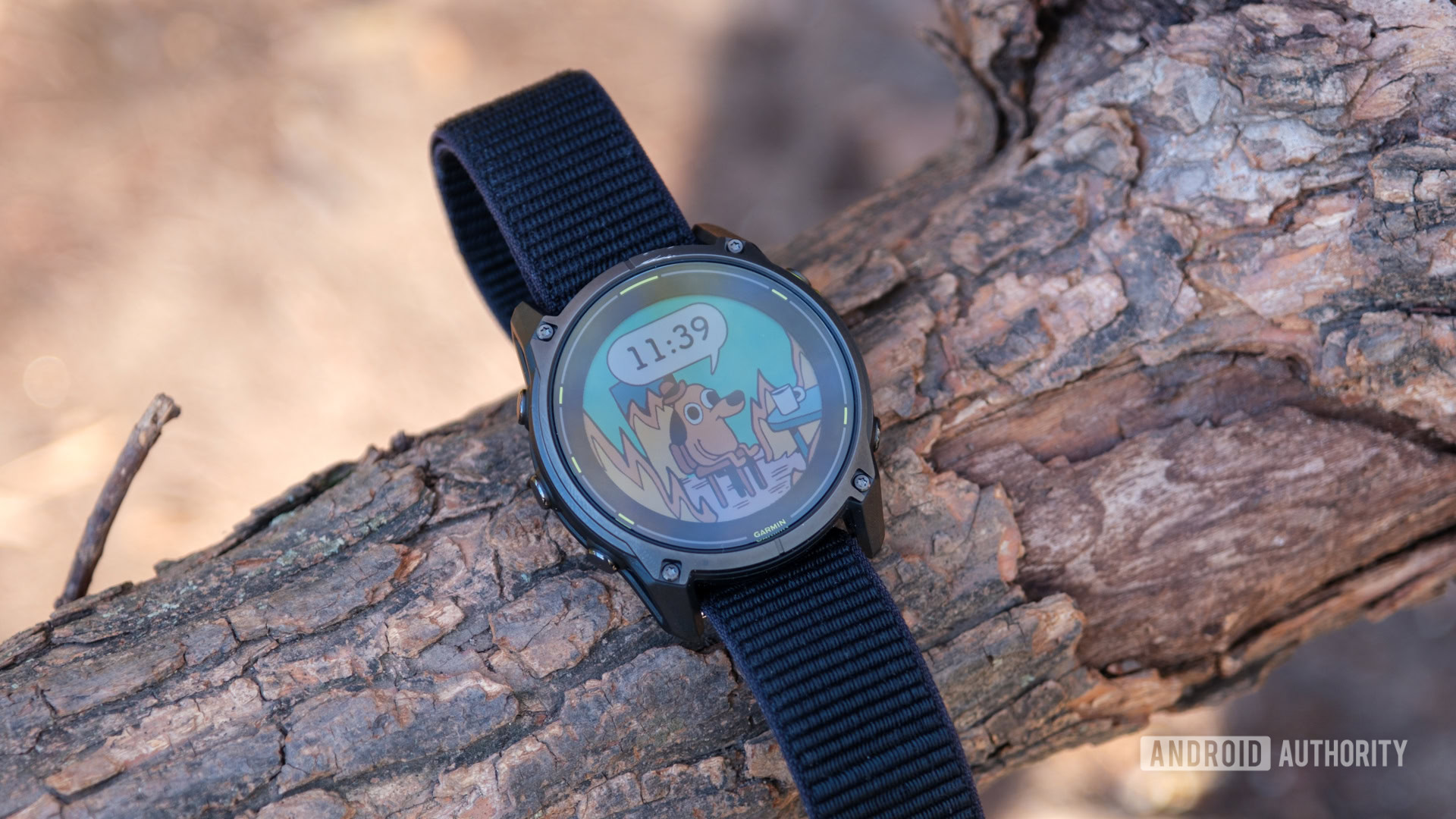
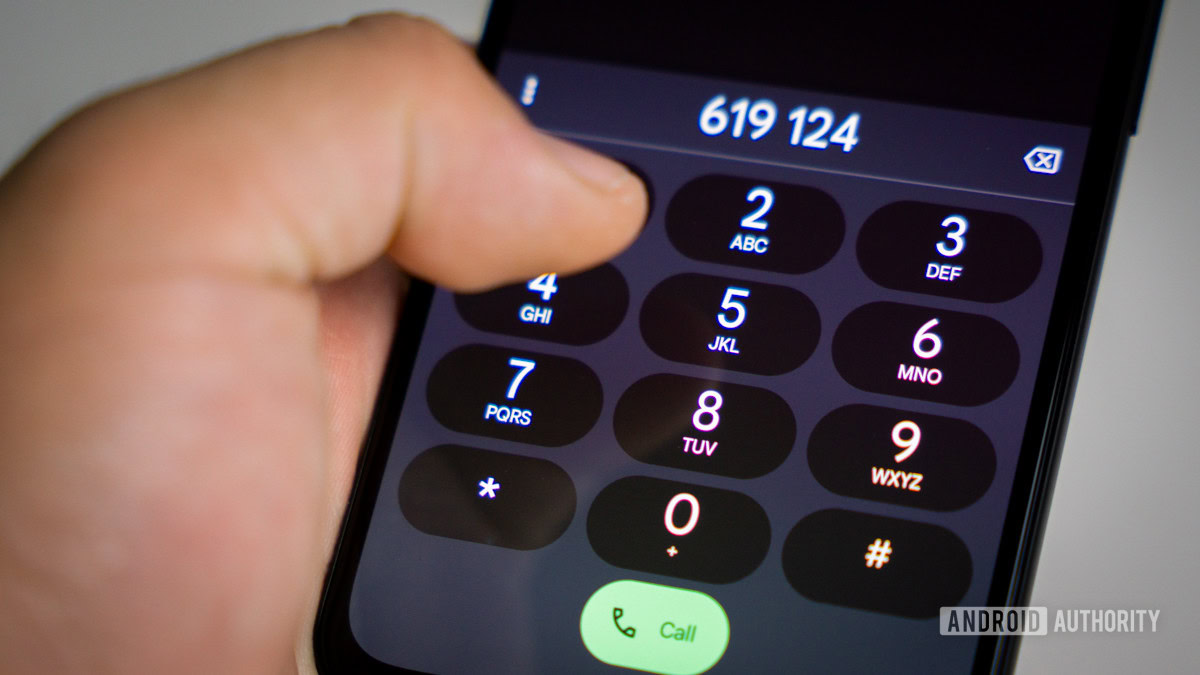




 English (US) ·
English (US) ·